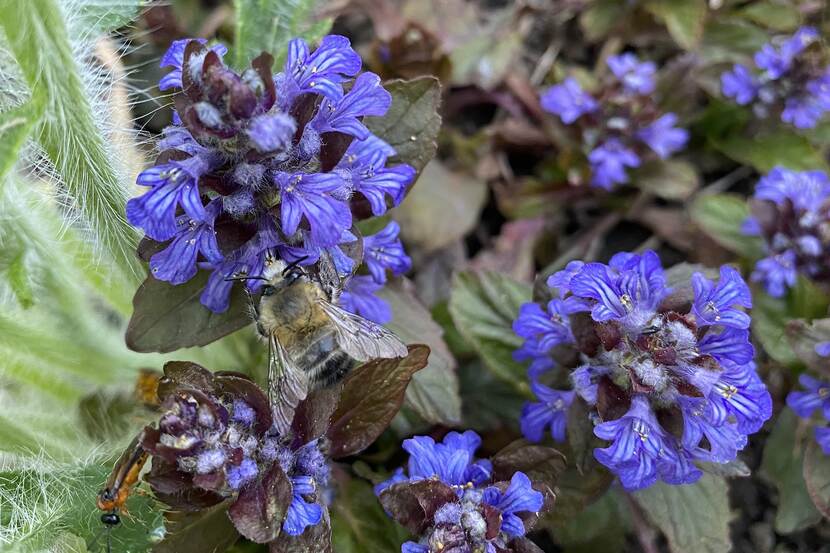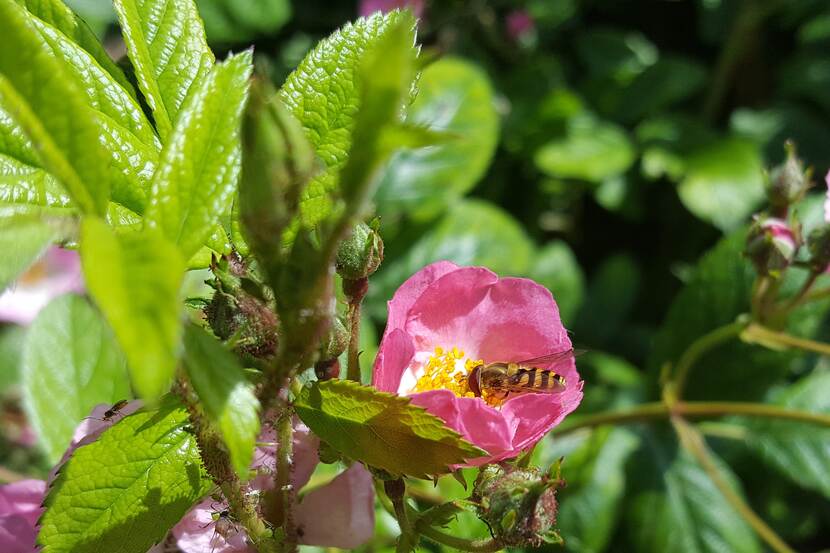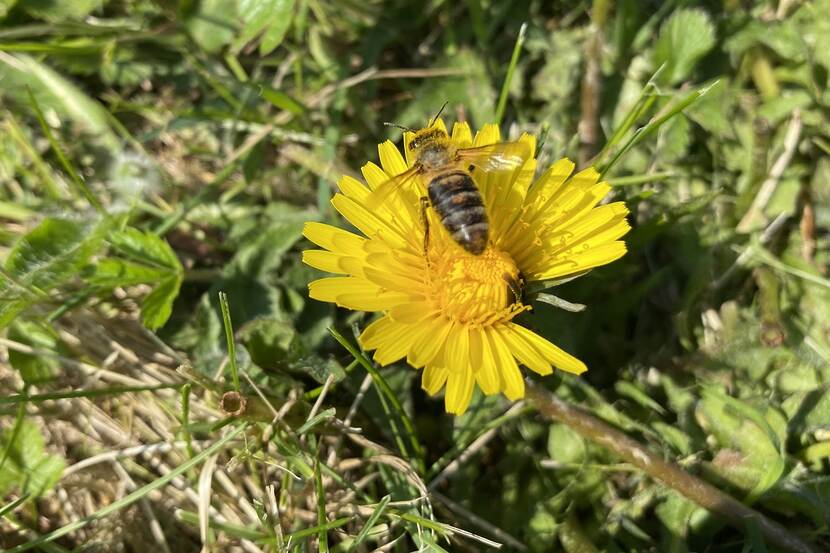World Bee Day: Poland cares for pollinators
Honey bee is the best known pollinating insect. But it is not the only one. Around 20-25 thousand species of bees and around 150 thousand species of animals capable of pollinating plants live in the world. In Poland, there are about 470 species of insects belonging to the bee family, most of which are solitary bees. They also have a very important role in pollinating plants, and are often more efficient pollinators than honey bees.

Thanks to the activity of pollinating insects, farmers receive higher yields of fruit, vegetables and oil and protein plants. 264 species of crops grown in the world are totally or partially dependent on pollination, and about 1/10 of the mass of food in the world comes from plants pollinated by insects. Useful insects, including pollinators, support farm work also by pest control. The welfare of pollinators is a common goal for all of us.
The safety of bees is very important!

Upon the World Bee Day it is worth remembering a few good practices to care for pollinating insects wisely and responsibly.
Contemporary crop production at the primary stage often cannot do without plant protection products. Incorrectly performed treatments, especially when using insecticides, carry extremely high risk for bees and other beneficial insects. Therefore, it is very important to skillfully use plant protection products in such a way that these risks are minimized.
The Plant Protection and Seed Inspection reminds on its website that when conducting chemical plant protection, one should in particular:
- use only plant protection products authorized for marketing and use on the basis of permits or parallel trade permits issued by the Minister of Agriculture and Rural Development;
- use plant protection products in accordance with the conditions laid down in the label and comply with the provisions regarding prohibitions and restrictions (phenological phase of the plant, time and period during which the product may not be used);
- use plant protection products in such a way as to minimize the negative impact of chemical treatments on non-target organisms;
- not use preparations toxic to bees during the flowering period of crop plants and in crops with flowering weeds;
- perform plant protection procedures after pollinating insect flights (in the evening or at night);
- check before starting procedures for lack of pollinating insects, especially bees;
- keep minimum distances from apiaries (i.e. min. 20 m for field and orchard sprayers);
- observe prevention periods;
- not perform the plant protection procedures in conditions conducive to drift of sprayed liquid during the treatment (at wind speed greater than 4 m / s).

In addition, the cooperation of the farmer and the beekeeper is essential for creating sustainable agriculture. It is worth remembering that in Poland the beekeeper may, in accordance with the regulations, apply to farmers for information about planned chemical plant protection treatments that are planned to be performed in the apiary area (at what time and by what means the treatment will be performed). And those using plant protection products are obliged to provide such information.
About 74% of beekeepers declare cooperation with farmers, and 65% of them assess this cooperation very well. Most often it involves placing hives at plantations and informing beekeepers about the dates of spraying. The close partnership between beekeepers and farmers reduces the risk factors for bees.
As regards the beekeeping sector in Poland, recent data are published for the season 2018/2019. As of October 2018, the number of bee hives in Poland was 1 633 355. In comparison with 2017 (1 552 765), we can see that it increased by approx. 5.2%. The most bee hives were recorded in the Lubelskie province (196.6 thousand), the least in Podlaskie (41.7 thousand). The most apiaries, about 591 thousand, keep between 21 and 50 hives, the least those up to 5 hives - over 49 thousand. There were over 544 thousand registered apiaries with the number of up to 20 bee hives.

The average apiary in Poland in 2018 had 22 bee hives. The country is characterized by uneven distribution of the apiaries and it is related to the climate conditions and the tradition of keeping bees. The most hives per 1 km2 are in the Malopolskie province (9.7), the least (2.1) in the Podlaskie province. On average, there were 5.2 bee hives per km2 in 2018.
Honey production in 2018 was over 22.3 thousand tons and it was a better year than 2017, in which almost 15.2 thous. tones were produces. The average honey harvest in stationary (amateur) apiaries was 17.4 kg from one bee hive, while in migratory (commercial) apiaries - 29.9 kg.
Source: piorin.gov.pl, farmer.pl, pzp.biz.pl, kalendarzrolnikow.pl